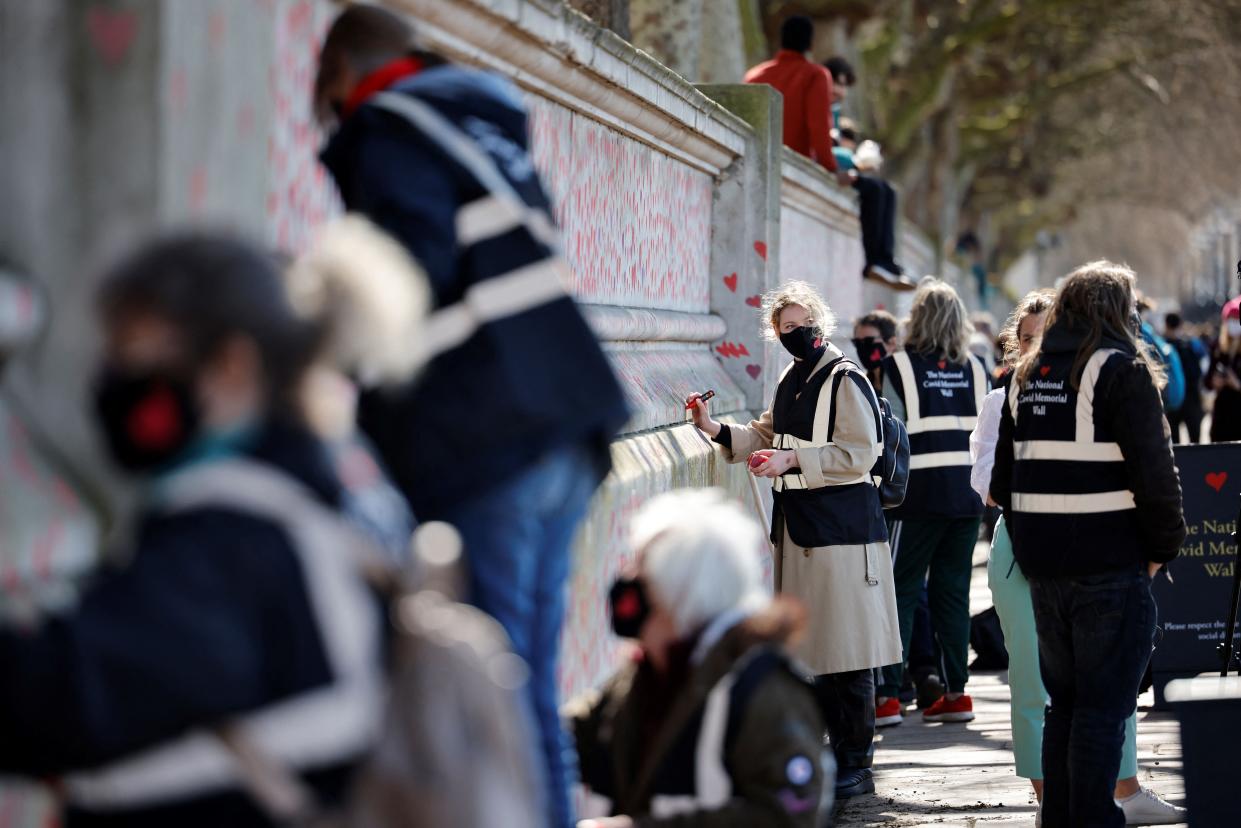Government modellers scale down size of Covid ‘exit wave’ for England

The expected “exit wave” of Covid infections as England eases out of lockdown will be smaller than originally predicted, according to the government’s scientific advisers.
The government’s roadmap out of lockdown has been shaped by a series of modelled scenarios produced by the University of Warwick and Imperial College London.
These continue to show that it is “highly likely” there will be a resurgence of Covid-19 infections after restrictions are lifted in the later stages of England’s roadmap. Scientists remain unsure over the precise scale, shape and timing of this exit wave.
However, according to a summary released by the government’s Scientific Pandemic Influenza Group on Modelling, Operational sub-group (SPI-M-O), the total number of predicted deaths and hospitalisations has now been revised down.
Under the main scenario modelled by the two university groups, a further 15,000 to 19,000 coronavirus deaths are expected up to June 2022. Previously, scientists predicted at least another 30,000 deaths over the same timeframe.
Read more:
‘Link’ between AstraZeneca vaccine and blood clots, EMA official says
Chile virus surge shows vaccine rollout may not end lockdowns, says Chris Whitty
They said the revisions were due to improved assumptions on vaccine uptake within the population, which has risen from 85 per cent acceptance among 50- to 80-year olds, to 95 per cent. The UK has one of the highest vaccine uptake rates in the world.
New data on the effectiveness of vaccination in preventing disease and minimising the spread of infection has also been worked into the new modelling.
The Warwick team now assumes 90 per cent effectiveness against both hospitalisation and deaths after two doses of the AstraZeneca or Pfizer vaccine, compared to a weighted average of 84 per cent for the Imperial experts.
The peak of England’s exit wave could occur in either summer or autumn, the expert say, in line with previous modelling that was published on 17 February. It is possible that warm weather “could delay or flatten the resurgence but is highly unlikely to prevent it altogether”, the scientists added.
About 100,000 cases are still predicted on a daily basis within the modelled range provided by the scientists, but due to widespread vaccine coverage and natural immunity the majority of these infections are unlikely to culminate in a serious outcome.
The SPI-M-O scientists warned that their modelling did not account for waning protection nor the future emergence of variants that are capable of evading natural or vaccine-induced immunity.
They highlighted the South African variant, know as B1351, as of “particular concern” for the UK. To date, 459 infections caused by B1351 have been detected across Britain, though it is likely the true figure is much higher.
Although there is confidence that step two of the lockdown roadmap, which includes the reopening of beer gardens and non-essential retail, will have a relatively small increase in transmission, the scientists argue that a high level of control will be needed after steps three and four to reduce the resurgence in Covid-19.
SPI-M-O argues that maintaining baseline measures, such as an effective Test and Trace system and the wearing of face masks, will almost certainly save many lives and minimise the threat to hospital capacity.
Despite the more optimistic outlook provided by the experts, they argue that bringing forward step three or four of the lockdown roadmap will result in a significantly larger resurgence than current modelling suggests.
SPI-M-O says their modelling remains dependent on assumptions about unknown factors, including how the rate of transmission will change after new restrictions are lifted, the future speed of the vaccine rollout and the impact of seasonal changes.
For this reason, the scientists insist that no definitive conclusions can be drawn and say that “uncertainty increases when looking further into the future”.
In spite of England’s successful vaccine programme and growing herd immunity, many vulnerable people are predicted to remain susceptible to Covid-19 in the months ahead.
This is because either they will not have received a jab or their vaccination has not prevented them from being infected and falling ill.
Previous scientific modelling, released earlier this year, suggested that even with an uptake rate of 90 per cent among the UK’s top priority groups, up to 1 million at-risk people would remain vulnerable to the disease.

